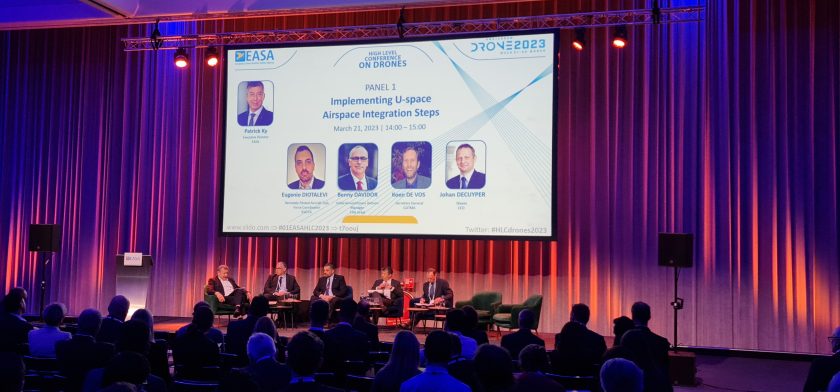By Philip Butterworth-Hayes
Hurry up and wait. For Europe’s drone operators who hoped that January 2023 implementation of the European Union’s U-space regulation would unleash a torrent of U-space areas throughout the continent – allowing them to start making serious money by, finally, being able to fly multiple simultaneous autonomous missions beyond visual line of sight (BVLOS) – these are frustrating times.
Speaker after speaker at this week’s Amsterdam Drone Week listed reasons why Member States will need months, perhaps years, to implement U-space areas.
- There is no clear indication of where the roles of U-space service providers (USSPs) and Common Information Service providers (CISPs) start and finish
- Integrating UTM airspace with ATM airspace, especially in dynamic configurations, is technically challenging.
- Integrating drone missions in U-space and non-U-space areas is also challenging.
- Regulators are under resourced in terms of personnel and knowledge to determine the USSP certification criteria and SORA 2.5 approvals.
- Many will require counter-UAS procedures, rogue drone identification and mitigation measures, to be integrated into U-space areas. The European Aviation Safety Agency (EASA) is planning to a counter-UAS package in the next two months – but this is just the start of understanding how this might work.
- Will some U-space services be available outside U-space areas?
The current front runners in the race to introduce U-space areas are Spain, Portugal, Switzerland, Belgium and Germany. But the danger is that these pioneers will implement U-space areas in very different configurations, making the USSP tactical market even more complex than it already is. And in terms of identifying revenue streams it is already highly complex. In Germany, for example, the regulator has indicated the CIS is the best environment for flight plan data exchange – other countries are seriously downplaying the role of CISPs.
In an ideal world, potential USSPs planning to develop services in these countries would already be talking to each other to see if it will be possible to harmonise at least some of the service areas. But this is a competitive market and no-one wants to divulge their business secrets at this pivotal, early stage. Or at any stage. After all, many potential USSPs have had to change their technical and business plans three times over the last four years.
For drone operators looking to develop the first business case from long-range delivery services the market entry point seems clear: fly in VFR airspace from small regional airport to small regional airport avoiding potential U-space areas altogether, using drones fitted with an appropriate conspicuity device and some kind of detect and avoid capability. According to some experts, aircraft operators need to see only 50% of neighbouring traffic in this environment.
Several remedies have been suggested. These include: certify USSPs, quickly, on the basis of risks they are being asked to manage. Ask the European Aviation Safety Agency (EASA) to step in even further and develop common procedures for critical services.
Most recognise that these are sub-optimal. But something will have to give. This a huge technical challenge for everyone but there is still time for Member States to work together to develop clear and harmonised approaches to identifying how U-space will be technically implemented and competition organised – especially in defining which services are regulated and which services will be market-based. The next few months will be critical to seeing how possible this is.




